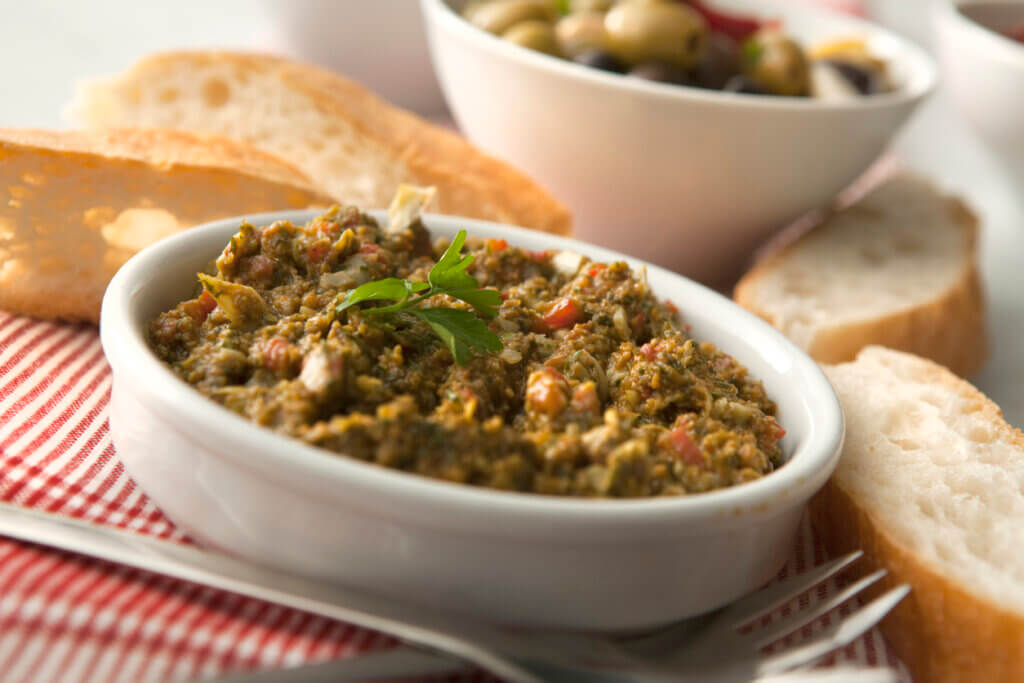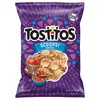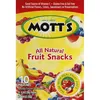Grocery Guides
Tapenade: Definition, Origin, and Other FAQs
Quick Answer
What is tapenade?
Tapenade is a spread made of olives and capers that have been finely chopped or ground into a paste. Most tapenades are made with olive oil and lemon juice, and some also incorporate anchovies. Tapenades can be made using green or black olives or a combination of the two. A mixture of olive varieties gives the salty spread a more complex flavor.
If you’re not sure what the differences are between green and black olives, it’s about their stage of ripeness when they’re picked. Green olives are picked before they ripen, and black olives ripen before they’re harvested. Because of that difference, the method used to preserve each type is different. In general, black olives are less bitter than green olives, as they soak in brine for a more extended period.
Some tapenades are made specifically with Kalamata olives. These black olives are generally larger than other varieties and are considered one of the most flavorful table olives. Capers are smaller than olives but have a similar flavor. Jars of capers are either pickled in vinegar or preserved in salt.

Lemon juice adds brightness to the salty flavor, and anchovies add protein and another layer of saltiness. Olive oil makes the spread smooth and adds more olive flavor. Mix it all, and you’ve got a tapenade.
Most often spread on bread or raw vegetables (like celery or carrot sticks) and served as an hors d’oeuvre, tapenade has other uses too. It can be used as a poultry stuffing or as a condiment to serve with several dishes. It’s an excellent complement to most fish dishes, as well as a great addition to tuna salad. Top your eggs with it or stir some into your egg salad for sandwiches.
Toasted bruschetta or crostini liberally spread with tapenade is a simple, yet elegant appetizer to serve guests or your family. For a quick dinner, you can top pasta with tapenade instead of a heavier sauce. You can mix some in with the dough for a more flavorful loaf if you’re baking bread.

Where did tapenade originate from?
The name tapenade is from the French Provençal word that means capers. The condiment gained popularity in the south of France, but ancient Roman texts suggest a similar spread in Italy thousands of years earlier.
While the name is linked directly to Provence, olive trees and caper bushes are plentiful throughout the Mediterranean, where tapenade is widely consumed.
How hot are tapenades?
Tapenade is olive-based that features olives and aromatic herbs. It features mostly a savory taste, but its spiciness can range from mild to hot, depending on how it is prepared. Chefs have made a variety of variations of tapenade that features fish, fruit, and meat. To add a fiery twist to the ingredients, chefs will opt to add peppers to the spread.
What are the nutritional benefits of eating tapenade?
The nutritional benefits of tapenade come from both the olives and the capers. Both are classified as fruits, and they deliver enormous nutrition benefits despite their small size. Olives are an excellent source of vitamin E and iron, and they also contain a healthy fat called oleic acid. Capers are rich in health-promoting flavonoids and are good sources of vitamin A, vitamin K, niacin, and riboflavin.
Best of all, olives, capers, and tapenades are a tasty way to add more plant-based foods to your meals.
When are tapenades in season?
Tapenade can typically be enjoyed all year long without interruption or worry about not finding it at the grocery store.
While its availability is accessible, the mass production for tapenade depends on its most important ingredient, the olive. Olives bloom among small white flowers in orchards beginning in May.
The olives will continue to ripen throughout the summer until they’re ready to be harvested in early fall. The olives will be picked when they start to darken but are still green. The harvest will begin in October and run through January. It’s essential to be very gentle with them while harvesting because it’s easy to bruise the olives.
How is tapenade made?
All the ingredients of tapenade—pitted olives, drained capers, garlic cloves, olive oil, lemon juice, and anchovies—are combined in a food processor until they’re very finely chopped or puréed. The resulting mixture is transferred to a jar, and those jars are what you’ll find in the grocery store.
What is the shelf life of tapenades?
An unopened jar of tapenade can be kept for 6 months or more. Once opened, it will last up to 2 weeks when properly stored.
Grab it now on Instacart:










How to store tapenade
Unopened jars of tapenade don’t need to be refrigerated, but they should be kept in the refrigerator with the jar tightly sealed once opened.
Once the tapenade has been opened, it’s essential to cover the unused portion with a fresh layer of oil. An opened jar of tapenade may remain fresh for a few weeks if placed in the refrigerator and if the canister has an airtight seal, if not, then it’s best to discard it after three days.
Tapenade can be saved for more extended periods in the freezer by canning it in an airtight container and ensuring its seal is air-tight. The tapenade can last anywhere from one to three months if it’s been sealed properly.
Whether you’re refrigerating or freezing the tapenade, the spread must be brought to room temperature before serving.
How to tell if tapenade is bad
The best way to tell if the tapenades have gone bad is by the way it smells. The tapenades will give off a foul older, and the texture and color will start to change. Mold will also likely begin to appear as an indicator that it’s gone bad.
What can I substitute for tapenade?
There are several things you can substitute for tapenade, depending on what you want to use it for. If it’s the olive flavor you’re craving, you’ll find cans or jars of olives with the pantry items at your grocery store. Capers are also great for flavoring fish and poultry recipes as well as egg dishes.
For a different flavor profile with your bread, try a tomato-based bruschetta spread or pesto. If you’re flavoring a meat dish, you might like giardiniera, a pickled vegetable relish, and for a dip, hummus goes excellent with crudités.
What should I look for when buying tapenade?

The most important thing to consider when choosing tapenade is simply your taste. Do you like the kind with anchovies or without? Do you prefer green olives or black? Maybe you prefer the brand that uses more than one variety of olive. Some tapenades are made with certified organic ingredients, while others may not be.
When shopping for tapenades at the grocery store, the most important thing to look out for is to ensure the container is sealed correctly. This is because the freshness of the tapenade’s spread is dependent on the seal. Also, keep an eye on the “sell-by date” to ensure the product is at its freshest.
The spread should have a dark green coloring to it, which indicates the olives used in the spread. Although it’s important to note the color may differ, depending on what other ingredients are used for flavor spread.
If you’re looking to have your groceries delivered, it’s easy to shop for tapenade via Instacart. After adding a product to your cart, use the “Instructions” option to notify your Instacart shopper about any preferences or specific directions on how to choose the products you’ll like best. Shop for tapenade.
Tapenades are a great pantry staple for foodies
Because tapenades are so versatile, they’re a great addition to your pantry. Use them as a vegetable dip, or spread some on toasted bread for a quick snack. If you enjoy cooking, you’ll find plenty of recipes that use tapenade to liven up your favorite dishes with salty, savory flavor.
The next time you shop online for groceries, let an Instacart shopper pick up some Mediterranean flavor for your family to enjoy.
Most Recent in Grocery Guides

Grocery Guides
15 Tasty Ice Cream Alternatives: Yogurt, Shaved Ice & More
Ice cream has been a beloved treat for generations. With its rich flavors and smooth texture, it’s no wonder people choose ice cream when looking for dessert. However, as dietary restrictions and health consciousness evolve,…...
Apr 10, 2024![When Is Artichoke Season? [Recipes + Guide]](https://www.instacart.com/company/wp-content/uploads/2024/03/when-is-artichoke-season-hero-447x224.webp)
Grocery Guides
When Is Artichoke Season? [Recipes + Guide]
Quick Answer When is artichoke season? In North America, artichoke season is from March to May, with smaller batches in October. Artichokes are a unique and versatile vegetable known for its tender heart and delicate…...
Mar 6, 2024
Grocery Guides
Brown Eggs vs. White Eggs: How Are They Different?
Eggs are an essential ingredient in many sweet and savory recipes. The possibilities are endless when it comes to using these protein-packed powerhouses — you can scramble, fry, boil or poach eggs, or you can…...
Feb 24, 2024

 Squash – All You Need to Know | Instacart Guide to Fresh Produce
Squash – All You Need to Know | Instacart Guide to Fresh Produce  Ghost Pepper – All You Need to Know | Instacart Guide to Fresh Produce
Ghost Pepper – All You Need to Know | Instacart Guide to Fresh Produce  Sprouts – All You Need to Know | Instacart Guide to Fresh Produce
Sprouts – All You Need to Know | Instacart Guide to Fresh Produce 

